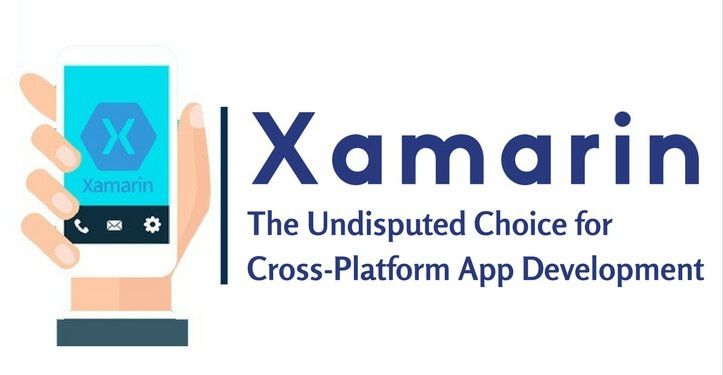Xamarin: The Undisputed Choice for Cross-Platform App Development

Confused between native and hybrid for your next app idea? We are here with the third, better solution.
For any business or even users to rely solely upon websites for information and services is somewhat like still using the dial-up to connect to the internet. Such is the impact and adoption that mobile apps have witnessed in the recent years, prompting app development companies to expand their technical base to encompass the vast spectrum of demands.
But, as always, there is a catch- while native applications built for any individual platform are more efficient and render much better performance, they are also equally expensive and time-consuming to build.
To bridge this crucial gap between app performance and time of development, Xamarian app development is the new tool that takes the cross-platform app development to new heights, which otherwise have a perception of being slow, buggy, and lacking in many features.
Launched 6 years ago, this IDE, that facilitates porting of a common codebase to create native applications for Android, iOS, and Windows, has garnered a large user base of over 1.4 million Xamarin app developers in over 120 countries. Though there are many tools in the market to create cross-platform applications, Xamarin has something exceptional- the ability to help create applications native to the corresponding platform, whilst retaining the speed that cross-platform app development.
So, let’s take a look at some of the highlights that contribute to the immense popularity of this tool and subsequent benefits that Xamarin app developers can reap:
#1. Native Application
Generally, cross-platform app development relies on hybrid/HTML5 apps, which stand far behind their native counterparts in almost every measure of performance. Xamarin app development, on the other hand, allows developers to leverage the native UI and device features while completing the code in C#. This, along with bringing in the native app experience, also results in seamless app performance.
#2. Logic Sharing
This is where the truly unique approach of Xamarin comes into play. Once you complete the codebase for any platform in C#, the logic of it can be easily ported to any another platform; thus, drastically reducing the development time and effort. From input validation and web service calls to database integration and logic underlying UI layer, any expert Xamarin app developer will tell you that as much as 75% of the original code can be ported to create an app for different platforms. Not only this results in lower development time but also leaves lesser scope for bugs to creep in.
#3. API Integration
Another key feature of Xamarin is that it efficiently binds the various APIs and UI controls used for application development for Android, iOS, and Mac platforms. The Windows applications can, however, be developed through Visual Studio. Also, the codes for each of these four platforms can be easily shared using Portable Class Library (PCL) and other related architecture. Plus, since Xamarin is actively evolving, as soon as any platform adds new native features, the same is incorporated in Xamarin app development.
#4. Component Store
Along with the various benefits packed within the Xamarin Studio, there are many more additional components- both free and paid, which can be used by the developers to bring extensive features to their application without actually spending much effort.
Be it UI controls, cross-platform libraries or third-party web services, Xamarin offers the option to quickly add these simple yet crucial features without actually writing a single line of code for them.
#5. C# Advantages
While Android and iOS applications are written in Java and Swift, respectively with their own set of benefits and flaws, Xamarin, on the other hand, picks up C# to do the task. The main reasons behind this choice are the simplicity, the object-oriented approach that it brings from ground-up and various checks and balances that it has to avoid many common errors.
Overall, writing and reading code of C# is simple and thus, equally easy-to-debug.
#6. Test Variability
One of the challenges of cross-platform app development is that since there is no fixed set of target device, there is always a risk of the app being not supported or behaving abnormally on some device it was not tested for. Xamarin solves this problem by simply proving a large number of test cases through which the developer can test every dimension of the app for almost all device configuration to preempt any bugs that might otherwise come up in the future.
Conclusion
Most businesses, when decide to make their app, face the same dilemma to choose between the performance of native and speed of hybrid apps. Now that you know that there is also a third option where you do not have to compromise on either, share your app idea with us to get only finest solutions for your business to propel.



/image%2F2087763%2F20210324%2Fob_ce4ce9_hypothesis-driven-development-4.png)
/image%2F2087763%2F20210310%2Fob_60138b_how-shipt-works-insight-into-busin.jpg)
/image%2F2087763%2F20210309%2Fob_ef59be_maneuver-to-create-an-event-app-in-202.jpg)
/http%3A%2F%2Fcdn-images-1.medium.com%2Fmax%2F800%2F0%2ApqSt_TDMVUUxm5qY.jpg)
/image%2F2087763%2F20210324%2Fob_ce4ce9_hypothesis-driven-development-4.png)
/image%2F2087763%2F20210318%2Fob_d3bac9_veterinary-consulting-firm.jpg)